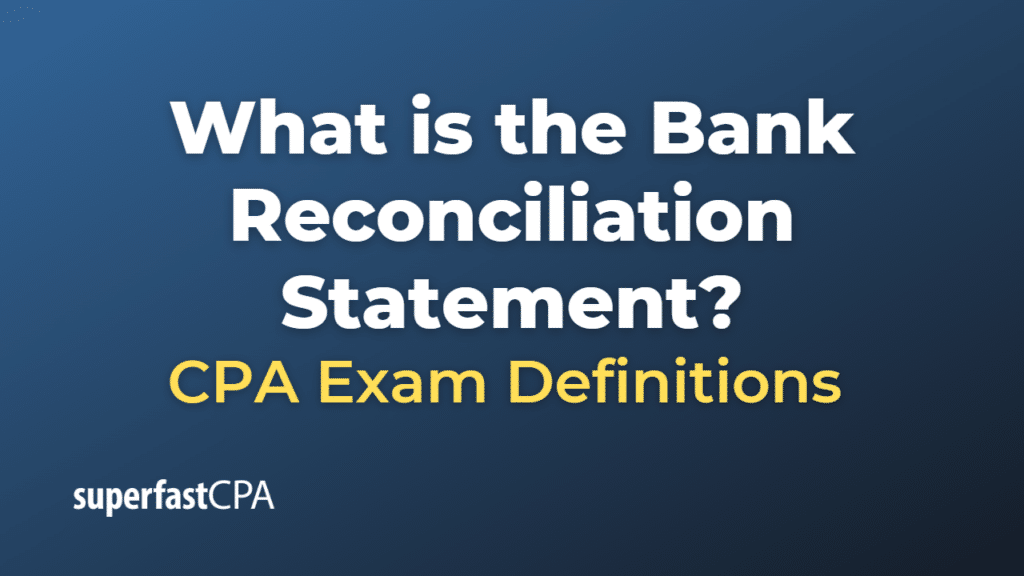Bank Reconciliation Statement
A bank reconciliation statement is a financial document that outlines the process of comparing an individual’s or a company’s internal financial records with their bank statement to ensure the accuracy and completeness of their financial records. The statement highlights the differences between the internal records and the bank statement, and documents any adjustments made during the reconciliation process to align the two sets of records.
A typical bank reconciliation statement includes the following components:
- Bank statement balance: The ending balance on the bank statement for the account being reconciled.
- Adjustments to the bank statement balance: These adjustments may include deposits in transit (deposits made but not yet reflected on the bank statement), outstanding checks (checks issued but not yet cleared by the bank), bank errors, or unauthorized transactions. These items are added or subtracted from the bank statement balance to arrive at the adjusted bank statement balance.
- Internal records balance: The ending balance of the internal financial records, such as the cash book or general ledger, for the account being reconciled.
- Adjustments to the internal records balance: These adjustments may include bank fees, interest earned, or corrections to transaction amounts that are not yet recorded in the internal records. These items are added or subtracted from the internal records balance to arrive at the adjusted internal records balance.
- Reconciliation difference: The difference between the adjusted bank statement balance and the adjusted internal records balance. Ideally, this difference should be zero, indicating that the financial records are accurate and complete. If there is a discrepancy, further investigation may be required to identify and resolve the cause of the difference.
The bank reconciliation statement serves as a formal record of the reconciliation process and provides valuable information for financial planning, decision-making, and maintaining accurate financial records. It also plays a crucial role in audit readiness and compliance with regulatory requirements.
Example of a Bank Reconciliation Statement
Let’s consider an example of a bank reconciliation statement for a small business owner who is reconciling their business checking account for the month of October.
- Bank statement balance: The business owner receives their bank statement for the month of October, which shows an ending balance of $15,000.
- Internal records balance: The business owner compiles their cash book (internal financial records) for the month of October and finds an ending balance of $14,600.
The business owner then compares the transactions listed in the cash book with those on the bank statement, looking for any differences or discrepancies.
Here’s a sample bank reconciliation statement based on the identified discrepancies:
- Bank statement balance: $15,000
Adjustments to the bank statement balance:
- Deposit in transit: +$1,000
- Outstanding check: -$500
- Bank error (duplicate withdrawal): +$200
- Adjusted bank statement balance: $15,700
- Internal records balance (cash book): $14,600
Adjustments to the internal records balance:
- Bank service fee: -$100
- Interest earned: +$200
- Adjusted internal records balance: $14,700
- Reconciliation difference: $15,700 (Adjusted bank statement balance) – $14,700 (Adjusted internal records balance) = $1,000
In this example, the bank reconciliation statement shows that the adjusted bank statement balance ($15,700) and the adjusted internal records balance ($14,700) have a difference of $1,000. The business owner needs to investigate and resolve the cause of this discrepancy to ensure the accuracy and completeness of their financial records.
The bank reconciliation statement serves as a formal record of the reconciliation process, providing valuable information for financial planning, decision-making, and maintaining accurate financial records.













